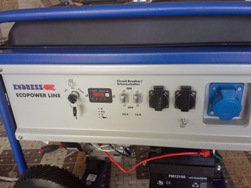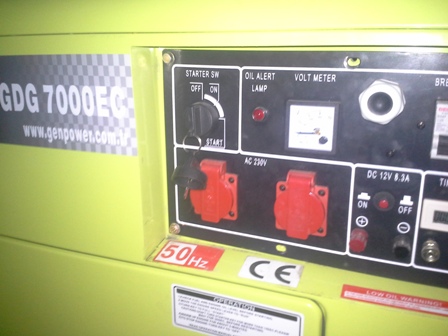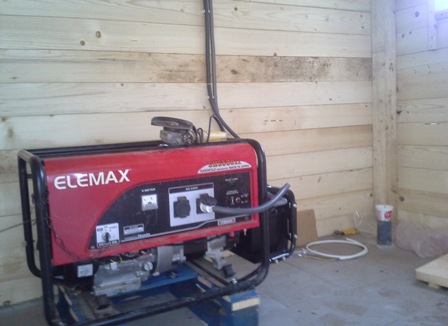Categories: Safety precautions
Number of views: 16288
Comments on the article: 1
Generator Safety
 Generators have firmly entered the lives of ordinary people. In order to operate the generator safely, a few simple rules should be followed.
Generators have firmly entered the lives of ordinary people. In order to operate the generator safely, a few simple rules should be followed.
With the onset of winter or with a regular outage, people are in a hurry to purchase a mini-power station. For many, this is the first experience of operating a generator.
Take a few minutes, make sure your generator ready for work. Check the level of oil and fuel in your generator, and if a long-term blackout is expected, replenish the fuel and supplies - filter, spark plugs, oil.
There are also several important safety instructions that we recommend that you observe while the generator is running.
To avoid carbon monoxide poisoning (carbon monoxide):
-
Always use generators outdoors, away from doors, windows and air vents.
-
Never start generators in homes, garages, basements or other enclosed or partially enclosed spaces, even with ventilation. There are many cases of carbon monoxide poisoning and, unfortunately, even fatal.
-
Follow the manufacturer's instructions. Generator models change frequently. We recommend that you read the instruction manual, sometimes they give practical advice.
-
Install an exhaust gas detector (with battery backup) Carbon Monoxide (CO) in your home in accordance with the manufacturer's instructions.
-
Carry out a CO Test regularly and replace the batteries if necessary.

To avoid the risk of electric shock:
-
Keep the generator dry. Use it under an open canopy or build a small extension for the generator to keep it clean and protected from rain.
-
Connect the necessary electrical appliances directly to the generator, use a quality extension cord. Make sure the cable cross-section matches the power of the generator used.
-
Make sure that the entire length of the extension cord is cut or torn and that the plug has three poles, including a ground contact.
-
NEVER plug the generator into an electrical outlet. This connection method can lead to electric shock to electricians and other workers repairing power lines.
-
If you need to connect the generator to the house wiring to power the appliances, contact a qualified electrician and install the appropriate equipment, whether ABP unit to automatically switch the load from the city to the generator and vice versa, or it can just be a cross over switch.
-
Know the specifications and specifications of your generator and the power your generator is capable of delivering. Try not to overload it. Recommended load for the generator is 75% of the nominal. The time of continuous operation is indicated in the passport for the generator. Typically, the generator runs continuously for 8-12 hours, depending on the capacity of the fuel tank.
-
If the generator is portable, then ground it before each start-up to avoid electric shock.

To avoid a fire:
-
Before refueling the generator, turn it off and allow it to cool. Fuel spilled on hot engine parts can ignite.
-
Always store fuel outside the living area in a special container.
-
Keep fuel separate from the generator.
-
The space around the generator must not be blocked by objects.
Sergey Seromashenko
See also at e.imadeself.com
:
